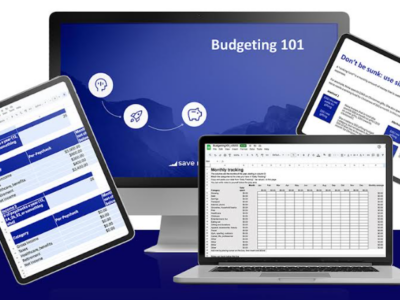One of the most basic assumptions we have to make in personal finance is inflation.
You can read more on investopedia as to why there is inflation, but essentially, what might cost you $10 today, may have a price tag of $20 in the future.
In finance terms, money is often referred to in “nominal” dollars versus “real” dollars. Using one year as an anchor – for example, the year 2016 – if I retire 30 years from now, I may need the equivalent of $25,000 a year to live in 2016 dollars (“real dollars”), or I may need an inflated amount of that to retire in 2046 dollars (“nominal dollars”). Nominal dollars is the amount we stare at when we’re looking at our bank accounts.
Inflation affects several calculations, two of which I will briefly cover today:
- How much you think you need to retire
- How much “real” growth you need out of your investments
How much you think you need to retire
For a very crude example, let’s say that today, I live off of $25,000 in expenses a year. If I plan to retire for 25 years starting in 2046 and live exactly the way I do now, I need to have a nest egg of about $25,000 x 25 = $625,000 in real 2016 dollars by the time I retire. However, if I only save $625,000 by the year 2046, then I will not have enough money in nominal terms. Why is that? Inflation.
You can do your own research on what inflation has been by checking out various government statistics, including the calculator provided by the Bureau of Labor Statistics (which is a historical calculator based on the consumer price index). Typically, you could take an average of inflation over the last 20, 30 years, and use that to forecast what you think inflation will be in the future. For simplicity’s sake, I too, will assume inflation is 2%, which is what a lot of retirement calculators assume.
The formula to calculate the inflated amount / nominal dollars in any year is such:
Amount of current year * ( (1+ inflation rate) ^ (future year – this year) )
For the example above, the calculation becomes
$625,000 * ( (1.02) ^ (2046 – 2016) ) = $1,132,101
So, my nest egg based on this calculation is about $1.1M in 2046 nominal dollars.
How much “real” growth you need out of your investments
The reason why inflation rate is so important, and the first concept I want to be aware of in retirement projections, is because, simply put, if I just save up $625,000 over my lifetime, I won’t be able to retire. My money has to match or grow faster than inflation, so that it does not lose value over time. Generally speaking, that means that any investment that does not have a growth rate greater than inflation, is a money-losing investment.
This is why most people invest in the stock market, which historically has had returns of 6 – 7%. Not only does that mean that you will beat inflation, it also means that you don’t need to save exactly $625,000 in real terms. You could save less than that, and let the stock market returns build your nest egg for you. Even though it can seem intimidating to start investing, and it is not without risks (you could retire in a bad year and your stock portfolio could lose value – we will discuss how to minimize risk in your portfolio in future blog posts). Nevertheless, it is easier to invest than saving each cent for cent, because it requires less money! And the good news? The earlier you start, the easier it will be.
Did you enjoy this post? Feel free to share with your friends, and don’t forget to join the Saavvy Cents Facebook group to gain access to password-protected posts in the future. Members are added every business day.





